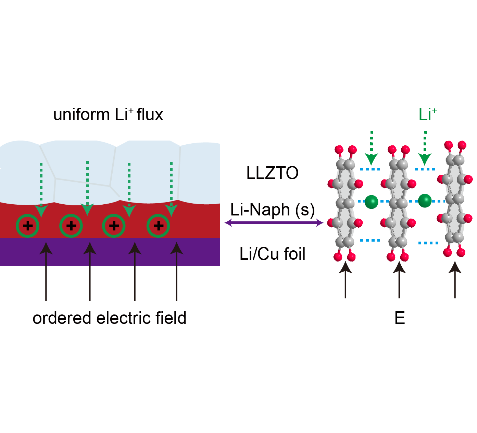
Plastic Monolithic Mixed-Conducting Interlayer for Dendrite-Free Solid-State Batteries
Solid-state electrolytes (SSEs) hold a critical role in enabling high-energy-density and safe rechargeable batteries with Li metal anode. Unfortunately, non-uniform lithium deposition and dendrite penetration due to poor interfacial solid-solid contact have been hindering their practical applications. Here, solid-state lithium naphthalenide (Li-Naph(s)) is introduced as a plastic monolithic mixed-conducting interlayer (PMMCI) between the garnet electrolyte and the Li anode via a facile cold process. The thin PMMCI shows a well-ordered layered crystalline structure with excellent mixed-conducting capability for both Li+ (4.38 × 10-3 S cm-1) and delocalized electrons (1.01 × 10-3 S cm-1). In contrast to previous composite interlayers, this monolithic material enables an intrinsically homogenous electric field and Li+ transport at the Li/garnet interface, thus significantly reducing the interfacial resistance and achieving uniform and dendrite-free Li anode plating/stripping. As a result, Li symmetric cells with the PMMCI-modified garnet electrolyte show highly stable cycling for 1200 h at 0.2 mA cm-2 and 500 h at a high current density of 1 mA cm-2. Our findings provide a new interface design strategy for solid-state batteries using monolithic mixed-conducting interlayers.



